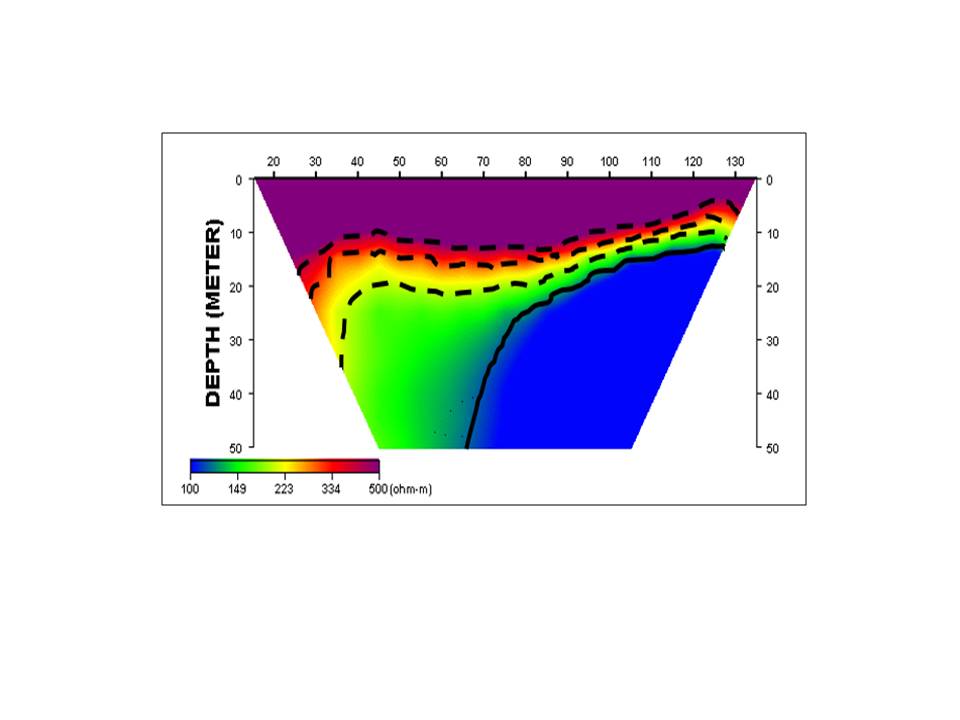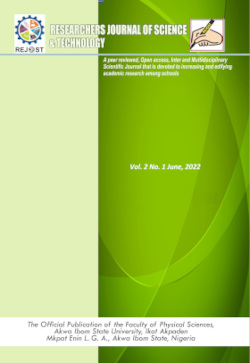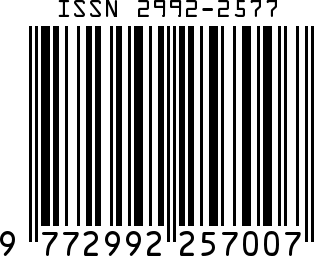Application of Combined 2-Dimensional Imaging and Dipole-Dipole Technique in Depth to Bedrock Delineation within UNIOSUN Main Campus Car Park, Osogbo, Nigeria
Keywords:
Osogbo, Resistivity, Overburden, Bedrock, PASI, IGISAbstract
An integrated geophysical investigation consisting of two-dimensional Wenner resistivity imaging and dipole-dipole techniques was carried out within Osun State University Main Campus, Osogbo, Nigeria on a site temporarily used as public car park. The aim of the study was to image the subsurface conditions of the site and delineates the overburden - bedrock interface of the subsurface in the car park in readiness for the concrete flooring of the car pack and to compare the results from using two different equipment; PASI and integrated geophysical information system (IGIS) terrameters. Wenner data was interpreted using the MS Excel while the dipole-dipole data was interpreted using DiprofWin software. Interpretation of field data produces 2D Wenner imaging and dipole-dipole pseudo-sections. Dipole-dipole pseudo-section revealed that the subsurface layers of the site comprises of about 10 meters of weak and incompetent sandy layer having a resistivity of 296 Ωm with the layer underlain by a 4-meters thick low-resistance lateritic layer of resistivity value of 372.18 Ωm. The bedrock underlying the sequence is about 15 m deep, with resistivity value between 4169.09 Ωm, and 4670.132 Ωm. The 2-D imaging interpretations using the two pieces of equipment correlate at shallow depth but differ at greater depth. The results obtained from the Wenner interpretation of the two pieces of equipment do not correlate due to the very high exaggerated values obtained while using the IGIS instrument. The result concludes that the depth-to-bedrock interface is best defined using the PASI resistivity instrument compared to the IGIS resistivity meter.
References
Ali, M.A.H.; Mewafy, F.M.;Qian,W.; Alshehri, F.; Ahmed, M.S.;Saleem, H.A. (2023) Integration of ElectricalResistivity Tomography and InducedPolarization for Characterization and Mapping of (Pb-Zn-Ag) SulfideDeposits. Minerals, https://doi.org/10.3390/min 13070986
Briggs A Martin., Phillip Goodling, Zachary C. Johnson, Karli M. Rogers, Nathaniel P. Hitt, Jennifer B. Fair and Craig D. Snyder (2022) Bedrock depth influences spatial patterns of summer base flow, temperature and flow disconnection for mountainous headwater streams; Hydrol. Earth Syst. Sci., 26, 3989–4011, 2022; https://doi.org/10.5194/hess-26-3989-2022
David Hart, Steve Mauel, John Luczaj, Esther Stewart (2021): Depth-to-bedrock mapping in Wisconsin; Open-File Report 2021-04 | 2021; Wisconsin Geological and Natural History Survey.
Folahan P. Ibitoye (2023): Geophysical Investigations for Design Parameters Related Geotechnical Engineering; Prototype Engineering Development Institute (National Agency for Science and Engineering Infrastructure), Ilesa, Nigeria, ’DOI: http://dx.doi. intechopen.108712org/10.5772/
Froese D.G, Smith D.G, and Clemet D.T, (2005). Characterizing large river history with shallow geophysics. Geomorphology, 67 (2005), pp. 391-406
HickinA.S, Benjamin Kerr,Barchyn T.E, and Paulen R.C,(2009). Using ground penetrating radar and capacitive coupled resistivity to investigate 3D fluvial architecture and grain size. Journal of sedimentary research, 79 (2009), pp. 457-477.
Hirsch M, Laurence R.B, and Peter D.R,(2008). A comparison of electrical resistivity, ground penetrating radar, and seismic refraction result at a river terrace site. Journal of environmental and engineering geophysics, 13 (2008), pp. 325-333.
Hsu H.L, Yanites B.J,Chien-chih C, and Yue-Gau C,(2010). Bedrock detection using 2D electrical resistivity imaging. Geomorphology, 114 (2010), pp. 406-414
Mochales, T., Casas, A.M., Pueyo, E.L., Pueyo, O., Román, M.T., Pocoví, A., Ansón, D., (2008). predictction of underground cavities by combining gravity, magnetic and ground penetrtrating radar surveys: a case study from the Zaragoza area, NE Spain. Environ.Geol. ,1067–1077.
Najafabadipour A. Kamali G.R. (2017): 3D Modeling and Bedrock Determination Using Electrical Resistivity Inversion; 23rd European Meeting of Environmental and Engineering Geophysics; DOI: 10.3997/2214-4609.201702108.
Neyamadpour Ahmad, Wan Abdullah, Samsudin, Taib and Behrang Neyamadpour (2010): Comparison of Wenner and dipole–dipole arrays in the study of an underground three-dimensional cavity; Journal of Geophysics and Engineering, Volume 7, Number 1; DOI10.1088/1742-2132/7/1/003.
Panthi, Jeeban and Boving, Thomas B. and Johnson, Carole D. and Pradhanang, Soni Mulmi and Savage, Brian and Ismail, Mamoon (2020): Delineating Bedrock Topography with Geophysical Techniques: An Implication for Groundwater Mapping; http://dx.doi.org/
ssrn.4247958.
Revil A, Cary L, Fan Q, Trolard F, and Finzola A, (2005). Self-potential signals associated with preferential ground water flow. Geophysical Research Letters, 32 (2005), pp.l07401.
Salami A, Babafemi E. (2020): Delineation of Near-Surface Structural Features Suitable for Groundwater Accommodation Using 1-D and 2-D Resistivity Methods in Igarra, Akoko-Edo, Southwestern Nigeria; Journal of Applied Sciences and Environmental Management; J. Appl. Sci. Environ. Manage. Vol. 24 (7) 1209-1215.
Tye A.M,Williams J.D.O, Trangheim D, Raines M, Keith A, and Holghar K, (2011). Using integrated near-surface geophysical surveys to aid mapping and interpretation of geology in an alluvial landscape. Near surface geophysics, 9 (2011), pp. 15-31
Zhou, W., Beck, B.F. and Stephenson, J.B., 2000. Reliability of dipole-dipole electrical resistivity tomography for defining depth-to-bedrock in covered karst terranes. Environmental Geology, 39(7), pp.760-766

Downloads
Published
How to Cite
Issue
Section
License
Copyright (c) 2023 Researchers Journal of Science and Technology

This work is licensed under a Creative Commons Attribution-NonCommercial-NoDerivatives 4.0 International License.




